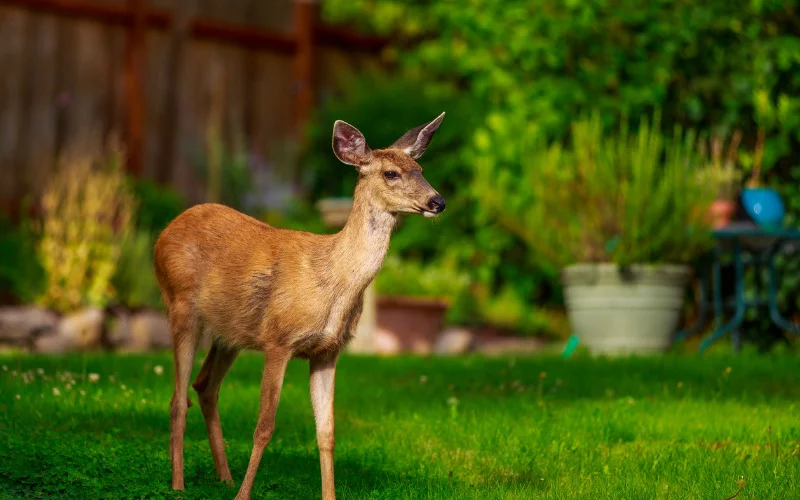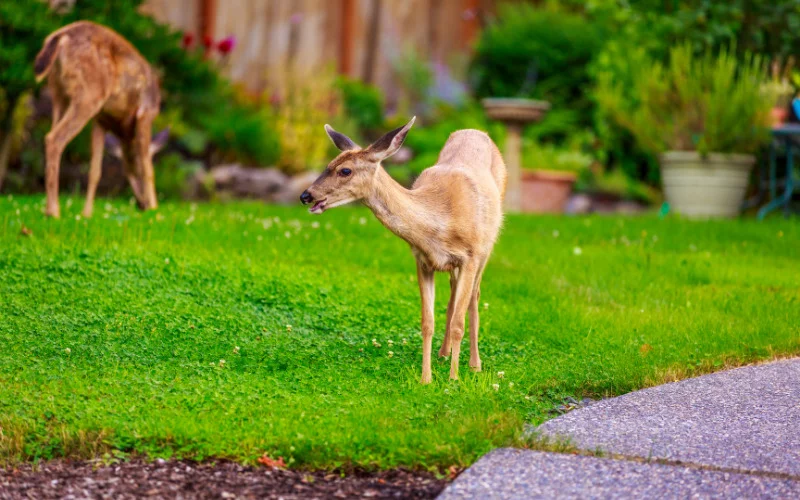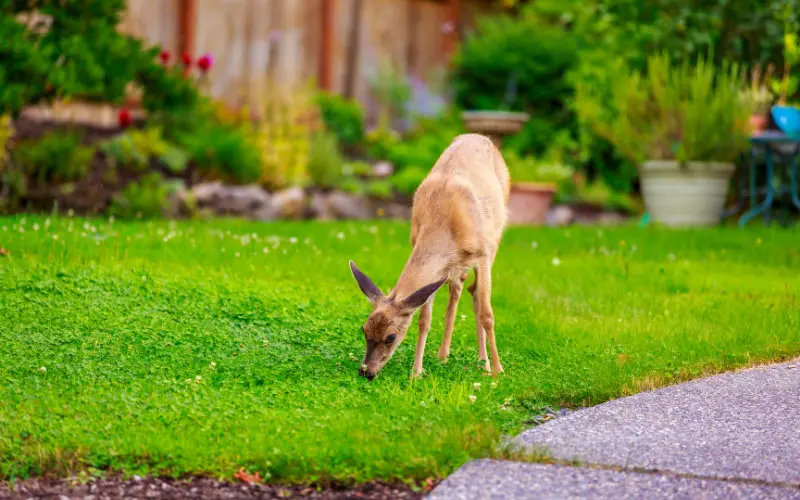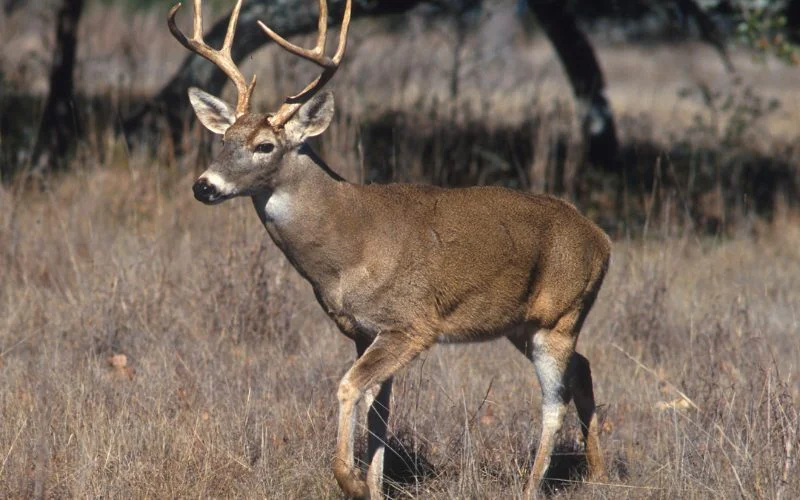Deer are very docile wild animals that are also timid and skittish. They have one of the highest human contact when compared to other animals. They live near humans, which has led to some of them being domesticated.
Deer in the wild do not have a very long lifespan. On average, some species have a life span of as low as three years, while others can live for up to 12 years in the wild.
The situation is a lot different for deer in captivity because some of them can live as long as 25 years if they are fed and cared for.
Classification Of Deer

Scientifically, deer are classified thus
- Kingdom: Animalia
- Phylum: Chordata
- Class: Mammalia
- Order: Artiodactyla
- Suborder: Ruminantia.
- Family: Cervidae
Genus: The Cervidae family has three subfamilies: capreolinae, cervine, and hydropotinae, and each deer falls into one of these generations.
The Average Life Cycle Of A Deer
Except for Antarctica, deer can be found throughout the world. There are so many species of them. The life cycle of a deer starts with the make deer sparring with each other during the rutting season, mainly in the summer months.
They use their antlers to fight to test their dominance and mate right over the females. As they spar, they usually lose their antlers, but they regrow before the next mating season.
The female deer, which is ln heat for just 2 to 3 days during the mating season, mates with the dominant male, and if the female deer gets pregnant, she carries the pregnancy for ten months, after which she gives birth away from the herd in thick vegetation where the fawn can be hidden from predators. Usually, a single fawn is delivered, but occasionally, a deer can give birth to twins.
The fawn suckle is hidden in the dense vegetation for some weeks before they join the herd. The female deer can get pregnant within their first birthday with excellent nutrition and a friendly environment.
How Long Do Deer Live In The Wild

Deers are in many different species, which differ in their appearance, behavior, and lifespan, but by and large. They are always a sight to behold. Below are some of the most common deer species and their lifespan:
The White-Tailed Deer
This tan or brown deer in the summer and grayish brown in winter has white on its throat and also around its eyes and nose, on its abdomen, and the underside of its tail.
They weigh from 90 to 300 pounds. In the wild, white-tailed deer have a 3-5 years lifespan, while in captivity, they can live for up to 20 years.
Mule Deer
The distinguishing characteristic of the mule deer is its large ears, about three-fourths the length of the head. The forehead is also characteristically black or masked, contrasting their face’s light gray color.
In the summer, mule deer are tannish-brown, and in the winter are brownish-gray in color. This mule can live for up to 5 to 9 years in the wild, during its lifespan is 15-20 years in captivity.
Red Deer:
With a life expectancy of 6 to 1 year in the wild, this deer can live for about 20 years in captivity. The red deer has red, dark russet-brown fur, a pale buff rump patch, and a pale tail. It is a large, sturdy deer with branching antlers.
Sika Deer:
Sika deer have a white tail patch that flares outward when alarmed. They have shorter snouts and smaller ears. These deer have a very high lifespan because, in captivity, they can live for 25 years, while in the wild, it lives for 10 to 12 years. The deer is small, with the female weighing as little as 70 pounds while the male weighs about 90 pounds.
Roe Deer
This medium-sized, slender deer has short antlers and no tail. This deer is brown but usually turns reddish in the summer and darker grey in the winter. Also very characteristic of this deer is the pale buff patch around its rump. It lives 5 to 7 years in the wild and 10 to 16 years in captivity.
Water Deer
These small, unique little deer live in some parts of Asia. They are part of the Cervidae family, and they can survive in the wild for you to 10 years, and in captivity, they can live for 15 years.
Eld’s Deer
The physique of this deer is regal and graceful, and this is because it has thin and long, and has a long body with a large head on a thin neck. The males are usually taller than the female, and they can live for 16 years in captivity.
Tufted Deer:
This tiny deer, with a fang-like tusk, is native to central China and Northeastern Myanmar. It has coarse, short, stiff hairs, almost black in the winter and chocolate brown in the summer.
The lips, tip of the ears, and underside of the tails are white, and it can live for 5 to 8 years in stormy and up to 15 years in captivity.
Factors That Affects The Lifespan Of Deer

The lifespan of deer is dependent on some factors, these factors show prevalence mostly in deer that live in the wild, and they include:
The number of predators in their environment
Deer are exposed to many predators in the wild, and the most common predators of deer include Mountain lions, coyotes, Wolves, and bears.
These predators mostly go after younger deer, which are easy prey. These young deer are vulnerable to attack by predators because they are smaller and less skilled in dodging predators.
So if an environment has a lot of predators, it is most likely that the lifespan of the deer in such places will be low. Even though wildlife watchers can help control the number of predators and prey, they can only maintain the balance sometimes.
The Availability Of Food
Animals will always thrive in an environment where there is an ample supply of the right kind of food because food can give them the energy to run from predators and also help them to be able to fight diseases.
So if the Availability of food in a given habitat is not adequate, it will negatively impact the lifespan of deer there.
Maternal Relationship
The relationship between a fawn and its mother will determine significantly if the fawn survives it not in the wild. The mother nurtures and protects the fawn from harm within the first birth year.
So if the mother is alive and strong, then the lifespan of that little fawn is likely to be increased, unlike those mothers who die before they can take care of themselves.
Disease
Deer, especially wild ones, can succumb to diseases that can kill them anytime. Some of the most typical diseases that are responsible for the high rate of mortality of deer include Chronic wasting disease (CWD), Epizootic hemorrhagic disease (EHD), and Bovine tuberculosis (BTB). These dresses usually affect more male deer than female deer.
Auto accidents
It is estimated that over a million deer die from accidents every year, and this is because they tend to wander so much in the street, the fact that they don’t have excellent depth perception. Their eyes are on the flanks of their heads and not in front. It makes it harder to see objects in front of them. It explains why many deer can’t see a car heading toward them.
Hunting
Hunting of deer is responsible for most deer deaths that happen. The male deer is the most victim of hunting because most hunters kill them for their antlers which many consider a hunting trip.
Weather
Adverse weather conditions like a storm are responsible for many deer deaths in the wild. For instance, severe storms can cause trees to fall or forests to flood, leading to their death. Forest fires are also occurrences that kill a lot of deer in the wild too.
Conclusion
Deers are wild animals who have had many interactions with humans; many have even become domesticated, where they are well taken care of and can live for up to 25 years.
Deer in the wild, however, are subjected to many factors that reduce their lifespan. On average, deer in captivity can live less than ten years in most cases.
Helpful Links:
- Do Bears Have Tails?
- Do Honey Bees live in the Ground?
- Do Deer Eat Tomatoes and Tomato Plant
- Do Skunks Eat Chickens?
- What Does Skunk Poop Look Like
Deer in captivity have almost double the lifespan of those in the wild because they are usually well taken care of, and so do not have to worry about such things as predators, food, and even sometimes diseases and adverse weather.
Follow us on Facebook, Instagram, and Pinterest for more updates.

